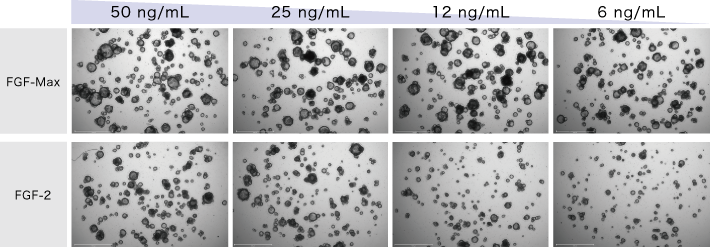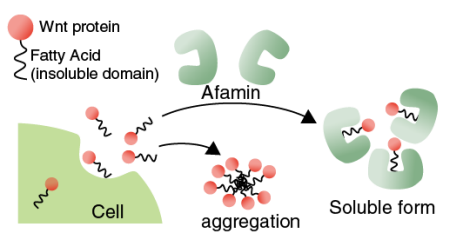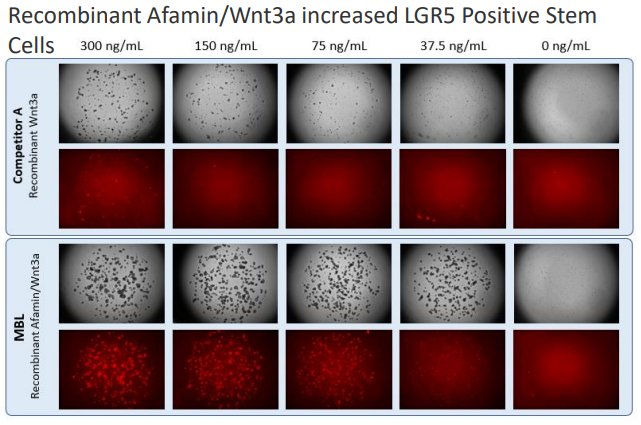Organoids are key 3-dimensional tissue structures and can be developed in many different types, they are used widely in drug discovery and various medical treatments due to their flexibility and how they can reflect cellular characteristics. When culturing organoids two growth factors are key to development, Wnt3a and FGF.
Wnt3a has been shown to maintain the proliferation of Lgr5-positive stem cells. Mihara et al discovered that by forming a 1:1 complex between the wnt3a and Afamin the wnt3a maintains a high activity. The complex is biologically active showing that Afamin is able to deliver the Wnt ligands to the cell surface receptors.
Due to Wnt3a proteins exhibiting strong hydrophobic properties, they are difficult to store and purify. This is the main issue for commercial Wnt3a products. MBL offers the solution to these issues with their stable and highly reactive Wnt3a cell culture medium. When conjugated with Afamin not only is the high activity maintained, but the ligand also does not aggregate in the aqueous solution.
FGF is also a key growth factor when culturing organoids, activation of the FGF/FGFR signalling pathway is important therefore, the correct FGFR Ligand must be selected for each organ type. This can make the experimental setup more complicated, particularly when new types of organoids are being cultured. FGF-1 is a universal FGFR ligand and shows a high affinity to all types of FGFR. However, the use of this is difficult as it is thermally unstable. Normal cell culture temperatures are 37 but the bioactivity is reduced significantly within 6 hours of the start point including when heparin is present. This causes FGF-1, which is commercially available, to be unsuitable for use in culture studies. This issue is solved by MBL’s FGF-Max a recombinant chimeric protein, which includes both FGF-1 and FGF-2. It is a universal FGFR ligand in which the thermal stability is greatly augmented.
Thermal Stability Evaluation

In a study comparing FGF-Max and FGF-2 it was shown that as the concentration was reduced, the proliferation of Human small intestinal organoids was higher in the presence of FGF-Max.

Afamin/Wnt3a and FGF-Max are different from the wild-type proteins and using advanced techniques from Japan, have been designed to improve organoid culture. MBL has the exclusive commercial use license of Afamin/Wnt3a and FGF-Max and is developing many new products to further simplify organoid culturing.
Further information
References
Emiko Mihara, Hidenori Hirai, Hideki Yamamoto, Keiko Tamura-Kawakami, Mami Matano, Akira Kikuchi, Toshiro Sato, Junichi Takagi (2016) Active and water-soluble form of lipidated Wnt protein is maintained by a serum glycoprotein afamin/α-albumin eLife 5:e11621
Information provided by MBL.
Caltag Medsystems is the distributor of MBL products in the UK and Ireland. If you have any questions about these products, please contact us.


